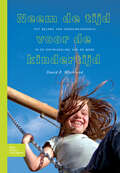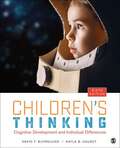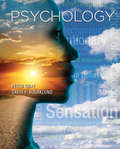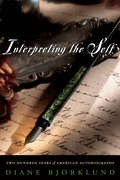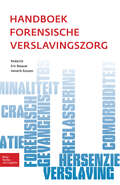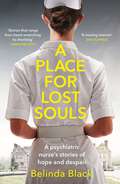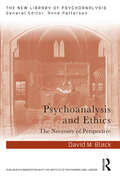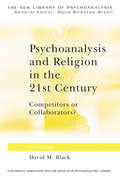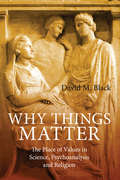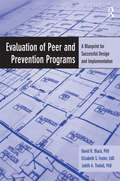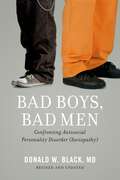- Table View
- List View
How Children Invented Humanity: The Role of Development in Human Evolution
by David F. BjorklundInfants and children are the often-ignored heroes when it comes to understanding human evolution. Evolutionary pressures acted upon the young of our ancestors more powerfully than on adults, and changes over the course of development in our ancestors were primarily responsible for the species and the people we have become. This book takes an evolutionary developmental perspective, emphasizing that developmental plasticity--the ability to change our physical and psychological selves early in life--is the creative force in evolution, with natural selection serving as a filter, eliminating novel developmental outcomes that did not benefit survival. This book is about becoming--of becoming human and of becoming mature adults. Bjorklund asks, "How can an understanding of human development help us better understand human evolution?" Then, turning the relation between evolution and development on its head, Bjorklund demonstrates how an understanding of our species' evolution can help us better understand current development and how to better rear successful and emotionally healthy children.
Neem de tijd voor de kindertijd: Het belang van onvolwassenheid in de ontwikkeling van de mens
by David F. BjorklundDe kindertijd is heel belangrijk voor de de mens. Of zoals auteur David Bjorklund zegt: 'Kinderen moeten de tijd en ruimte hebben om te kunnen spelen, observeren en zomaar een beetje aan te rommelen'.In Neem de tijd voor de kindertijd onderzoekt de auteur de lange periode van lichamelijke, sociale en intellectuele onvolwassenheid die wij 'als soort' doormaken op weg naar volwassenheid. Die weg wordt voor een deel biologisch en voor een deel sociaal-maatschappelijk bepaald. Dit samenspel wordt vanuit een evolutionair perspectief helder uitgewerkt. Hoe hebben veranderingen binnen de samenleving onze kijk op kinderen beinvloed, en hoe beinvloeden deze veranderingen de levens van kinderen? Neem de tijd voor de kindertijd moedigt de lezers aan om de kindertijd te zien als een essentiele fase in de ontwikkeling van de mens: een fase van groei en ontdekking die niet haastig moet worden afgeraffeld.
Why Youth is Not Wasted on the Young: Immaturity in Human Development
by David F. BjorklundWhy Youth is Not Wasted on the Young examines the nature of childhood through an evolutionary lens and argues that childhood is an essential stage of development with its own unique purposes, separate from those of adulthood; a time of growth and discovery that should not be rushed. Written by a renowned developmental psychologist Examines the role that our period of immaturity plays on the social, emotional, and educational needs of today’s children Challenges common perceptions of children as simply “adults in training”
Children's Thinking: Cognitive Development And Individual Differences (PDF)
by David F. Bjorklund Kayla B. CauseyThe Sixth Edition of the topically organized Children’s Thinking presents a current, comprehensive, and dynamic examination of cognitive development. The book covers individual children and their developmental journeys while also following the general paths of overall cognitive development in children. This unique and effective approach gives readers a holistic view of children’s cognitive development, acknowledging that while no two children are exactly alike, they tend to follow similar developmental patterns. Supported by the latest research studies and data, the Sixth Edition provides valuable insights for readers to better understand and work with children.
Psychology: 7th Edition
by David F. Bjorklund Peter O. GrayPeter Gray's evolutionary perspective and emphasis on critical thinking have made his rigorous yet accessible introduction to psychology a widely respected classroom favourite, edition after edition. Now thoroughly revised, with the help of new co-author David Bjorklund, the seventh edition of Psychology invites and stimulates students to investigate the big ideas in psychological science. Psychology can be purchased with the breakthrough online resource, LaunchPad, which offers innovative media content, curated and organised for easy assignability. LaunchPad's intuitive interface presents quizzing, flashcards, animations and much more to make learning actively engaging.
Interpreting the Self: Two Hundred Years of American Autobiography
by Diane BjorklundIn this ambitious study, Diane Bjorklund explores the historical nature of self-narrative. Examining over 100 American autobiographers published in the last two centuries, she discusses not only well-known autobiographies such as Mark Twain and Andrew Carnegie but also many obscure ones such as a traveling book peddler, a minstrel, a hotel proprietress, an itinerant preacher, a West Point cadet, and a hoopskirt wire manufacturer. Bjorklund draws on the colorful stories of these autobiographers to show how their historical epoch shapes their understandings of self. "A refreshingly welcome approach to this intriguing topic. . . . [Bjorklund's] extensive and systematic approach to her source material is impressive and enriches our understanding of this essential subject."—Virginia Quarterly Review "Bjorklund studies both famous and obscure writers, and her clear prose style and copious quotations provide insight into the many aspects of the changing American self." —Library Journal
Of Mice and Women: Aspects of Female Aggression
by Kaj Bjorkqvist Pirkko NiemelaThis book is a comprehensive compilation and discussion of research findings on female aggression from anthropology, social psychology, animal research, case studies, and representations in literature. This multidisciplinary approach will address such questions as: 'Are females less aggressive than males?' 'Is female aggressive behavior perhaps quantitatively, different than male aggressive behavior?' The book also discusses patterns of agression, the role of hormones in aggression, cultural differences, and how human aggression differs from aggression within animal species.
Happiness (Reflections)
by Christian BjørnskovA short but engaging look at how the key to our own happiness may lie with other people.Why is Denmark consistently ranked one of the happiest nations? In Happiness, researcher Christian Bjørnskov explores what we mean when we talk about happiness. Based on new research findings on how people perceive their own lives, Bjørnskov argues that the basic factors that constitute happiness are mostly universal across cultures. By evaluating studies and theories on happiness that test how family, genetics, religion, wealth, work, and trust factor into our happiness as well as how often we smile or compare ourselves to others, Bjørnskov outlines why our most important source of happiness may be the people around us. ReflectionsIn Reflections, a series copublished with Denmark's Aarhus University Press, scholars deliver 60-page reflections on a key concept that encapsulates their years of study and research. These books present unique insights on a wide range of topics and concepts—everything from love, trust, and play, to corruption, welfare, and sleep—that entertain and enlighten readers with exciting discoveries and new perspectives.
Happiness (Reflections)
by Christian BjørnskovA short but engaging look at how the key to our own happiness may lie with other people.Why is Denmark consistently ranked one of the happiest nations? In Happiness, researcher Christian Bjørnskov explores what we mean when we talk about happiness. Based on new research findings on how people perceive their own lives, Bjørnskov argues that the basic factors that constitute happiness are mostly universal across cultures. By evaluating studies and theories on happiness that test how family, genetics, religion, wealth, work, and trust factor into our happiness as well as how often we smile or compare ourselves to others, Bjørnskov outlines why our most important source of happiness may be the people around us. ReflectionsIn Reflections, a series copublished with Denmark's Aarhus University Press, scholars deliver 60-page reflections on a key concept that encapsulates their years of study and research. These books present unique insights on a wide range of topics and concepts—everything from love, trust, and play, to corruption, welfare, and sleep—that entertain and enlighten readers with exciting discoveries and new perspectives.
Emotional Prosody Processing for Non-Native English Speakers: Towards An Integrative Emotion Paradigm (The Bilingual Mind and Brain Book Series #3)
by Halszka BąkThis volume provides the first systematic and data-driven exploration of English emotional prosody processing in the minds of non-native speakers of the language. Over the past few decades emotional prosody has attracted the interest of researchers from a variety of disciplines such as psychiatry, neuropsychology, psycholinguistics, and linguistics. Although a considerable collective body of empirical evidence exists regarding emotional prosody processing in native speakers of various languages, non-native speakers have been virtually ignored. This constitutes a knowledge gap of increasing relevance, as we approach 2050, the year when the global population of non-native speakers of English is estimated to overtake that of native speakers of the language. This volume aims to fill this gap and provide insights into how emotions are processed on multiple levels while also presenting novel methodological solutions. Crucially, Emotional Prosody Processing for Non-Native English Speakers: Towards an Integrative Emotion Paradigm begins by providing a conceptual background of emotion research, and then demonstrates a novel, workable, completely integrative paradigm for emotion research. This integrative approach reconciles theories such as the dimensional view of emotions, the standard basic emotions view, and the appraisal view of emotions. Following this theoretical section is an empirical exploration of the topic: the volume explores those views via experimental tasks. The insight into overall processing such a multiple-level approach allows a comprehensive answer to the question of how non native speakers of English process emotional prosody in their second language. By offering a critical, data-driven, integrative approach to investigating emotions in the minds of non-native English speakers, this volume is a significant and timely contribution to the literature on emotion prosody processing, bilingual research, and broadly understood emotion research.
Handboek forensische verslavingszorg
by Eric Blaauw Hendrik RoozenVerslavingsproblematiek speelt een belangrijke rol in het veld van politie, justitie, gevangeniswezen, tbs en forensische zorginstellingen. Verslaving en criminaliteit gaan hand in hand. Dit boek gaat in op deze complexe relatie, maar legt de focus vooral op de mogelijkheden om de relatie tussen verslaving en criminaliteit te doorbreken. Een handboek dat er buitengewoon goed in is geslaagd om de actuele stand van zaken met betrekking tot de verslavingszorg binnen de diverse forensische contexten in samenhang en voor de lezer op toegankelijke wijze inzichtelijk te maken. Het zet de lezer aan tot een nadere reflectie op de diagnostiek en indicatiestelling met betrekking tot verslavingsproblematiek. In het licht van de actuele ontwikkelingen op het terrein van de forensische zorg in de penitentiaire inrichtingen een absolute aanrader voor alle bij de zorg betrokken professionals en beleidsmakers.Drs. J.C.J. Fischer, GZ psycholoog/Ressort coördinator van bij het Gevangeniswezen werkzame GZ psychologenDe forensische verslavingszorg omvat de zorg aan verslaafde personen met een strafrechtelijke titel. Deze zorg is volop in beweging. Nadat de financiering van de zorg voor justitiabelen in 2008 in handen kwam van justitie kregen het forensische circuit en het veld van de geestelijke gezondheidszorg meer met elkaar te maken. Het gevangeniswezen is druk bezig met zich in te stellen op individuele zorg voor gedetineerden en zorginstellingen richten zich meer op personen met een strafrechtelijke titel, waaronder gedetineerden. De reclassering focust haar werk in toenemende mate op individuele vereisten van justitiabelen en nieuwe wetten en beleidslijnen worden in hoog tempo aangescherpt. Het Handboek forensische verslavingszorg bespreekt deze veranderingen en de huidige stand van zaken in de zorg voor verslaafde justitiabelen.De forensische verslavingszorg omvat de zorg aan verslaafde personen met een strafrechtelijke titel. Deze zorg is volop in beweging. Nadat de financiering van de zorg voor justitiabelen in 2008 in handen kwam van justitie kregen het forensische circuit en het veld van de geestelijke gezondheidszorg meer met elkaar te maken. Het gevangeniswezen is druk bezig met zich in te stellen op individuele zorg voor gedetineerden en zorginstellingen richten zich meer op personen met een strafrechtelijke titel, waaronder gedetineerden. De reclassering focust haar werk in toenemende mate op individuele vereisten van justitiabelen en nieuwe wetten en beleidslijnen worden in hoog tempo aangescherpt. Het Handboek forensische verslavingszorg bespreekt deze veranderingen en de huidige stand van zaken in de zorg voor verslaafde justitiabelen.Het boek behandelt de mogelijkheden voor een goede forensische verslavingszorg in het spanningsveld van meer en zwaarder straffen en meer behandelen met de vermindering van recidive als doel. De verschillende behandelingen die wetenschappelijk gezien hun nut hebben bewezen komen hierbij aan bod, en ook de behandelingen in de verschillende werkvelden. Daarbij wordt tevens ingegaan op diagnostiek en de rol van het slachtoffer. Uniek in zijn opzet, zal het boek van nut zijn voor verslavingszorginstellingen, GGZ-instellingen, reclasseringsinstellingen, penitentiaire inrichtingen, TBS-inrichtingen, opleidingsinstituten. En voor afzonderlijke professionals die te maken hebben met de forensische verslavingszorg.
Exposure Therapy for Eating Disorders (ABCT Clinical Practice Series)
by Carolyn Black Becker Nicholas R. Farrell Glenn WallerExposure Therapy for Eating Disorders is designed to augment existing eating disorder treatment manuals by providing clinicians with practical advice for maximizing the effectiveness of exposure, regardless of clinical background or evidence-based treatment used. Suitable for use with a range of diagnoses, this easy-to-use guide describes the most up to date empirical research on exposure for eating disorders, extrapolating clinical advice from the anxiety disorders literature in order to help busy clinicians become more effective in treating these challenging illnesses. Readers will gain solid understanding of the theoretical underpinnings of exposure therapy, as well as how to utilize this information to explain the rationale for exposure to patients. Specific types of eating disorder exposure are covered in detail, including exposure to food and eating, cue exposure for binge eating, weighing and weight exposure, novel forms of exposure for eating disorders, and more. The book also provides strategies for overcoming obstacles, including institutional resistance to implementation of exposure therapy.
A Place for Lost Souls: A nurse's stories of hope and despair from a 1980s psychiatric hospital
by Belinda Black'Ultimately, my experiences as a mental health nurse have taught me that we should judge less and open our hearts more.'Belinda Black was just seventeen years old when she began working as a nursing assistant at the large and foreboding 'madhouse', as it was then known to the villagers of her hometown in the north of England. Following in the footsteps of her mother, she went on to spend a decade caring for patients with widely varying mental health problems, all locked up together and out of view of society. Some had suffered unimaginable trauma, several had violent and volatile tendencies, but amongst this Belinda found moments of joy and even friendship with her patients.But A Place for Lost Souls is also about the other psychiatric nurses there, from those like Sister Kane who suffered from depression and found treating others a welcome distraction, to others like Belinda's friend Sally, who always had a sense of humour however dark the situation.Together, against a backdrop of rattling keys, clanging iron doors, and wards that smelled of disinfectant and stale smoke, these people came together to get through another day. Until the hospital, along with many others, had its doors closed in 1991 - the biggest change to mental healthcare in NHS history.The result is a moving, shocking but ultimately life-affirming account of a unique and noble profession, told from the frontlines. Amongst so much sadness and distress, and despite witnessing some of the darkest corners of human suffering, Belinda finds hope: in the camaraderie of her colleagues, in the patients she cares for, and in her unwavering belief that even people who have committed violent crimes are fundamentally good.
Advocacy and Empowerment: Mental Health Care in the Community
by Bruce L. Black Stephen M. RoseRelevant and thought-provoking, describes a new and imaginative approach to the needs of de-institutionalised people returning to care in the community. It shows that there is a challenging but dynamic contribution to be made by all community mental health workers in restoring dignity to the lives of those who have tragically been robbed of such a basic human need.
Advocacy and Empowerment: Mental Health Care in the Community
by Bruce L. Black Stephen M. RoseRelevant and thought-provoking, describes a new and imaginative approach to the needs of de-institutionalised people returning to care in the community. It shows that there is a challenging but dynamic contribution to be made by all community mental health workers in restoring dignity to the lives of those who have tragically been robbed of such a basic human need.
Psychoanalysis and Ethics: The Necessity of Perspective (New Library of Psychoanalysis)
by David M. BlackPsychoanalysis and Ethics: The Necessity of Perspective is an attempt to look deeply into the relationship between psychoanalysis and ethics, and in particular into the failure of traditional psychoanalytic thinking to recognise the foundational character of ethical values. In recent years, partly because of the climate crisis, the need for an "ethical turn" in our thinking has been recognised with increasing urgency. Using different historical lenses, and with special reference to the thought of the philosopher Emmanuel Levinas and pioneering American psychoanalysts such as Hans Loewald and Stephen Mitchell, the author discusses the perspectives needed in addition to those of science if the facts of "psychic reality" are to be more adequately recognised. In particular, this book emphasises the importance of a coherent account of the role of ethics in shaping the development both of the individual and of society. Psychoanalysis and Ethics is essential reading for those concerned for the importance of ethics in psychoanalytic practice and theory, and more widely for those seeking to understand the place of ethics and religion in psychological development.
Psychoanalysis and Ethics: The Necessity of Perspective (New Library of Psychoanalysis)
by David M. BlackPsychoanalysis and Ethics: The Necessity of Perspective is an attempt to look deeply into the relationship between psychoanalysis and ethics, and in particular into the failure of traditional psychoanalytic thinking to recognise the foundational character of ethical values. In recent years, partly because of the climate crisis, the need for an "ethical turn" in our thinking has been recognised with increasing urgency. Using different historical lenses, and with special reference to the thought of the philosopher Emmanuel Levinas and pioneering American psychoanalysts such as Hans Loewald and Stephen Mitchell, the author discusses the perspectives needed in addition to those of science if the facts of "psychic reality" are to be more adequately recognised. In particular, this book emphasises the importance of a coherent account of the role of ethics in shaping the development both of the individual and of society. Psychoanalysis and Ethics is essential reading for those concerned for the importance of ethics in psychoanalytic practice and theory, and more widely for those seeking to understand the place of ethics and religion in psychological development.
Psychoanalysis and Religion in the 21st Century: Competitors or Collaborators? (The New Library of Psychoanalysis)
by David M. BlackWhat can be gained from a dialogue between psychoanalysis and religion? Freud described religion as the universal obsessional neurosis, and uncompromisingly rejected it in favour of "science." Ever since, there has been the assumption that psychoanalysts are hostile to religion. Yet, from the beginning, individual analysts have questioned Freud's blanket rejection of religion. In this book, David Black brings together contributors from a wide range of schools and movements to discuss the issues. They bring a fresh perspective to the subject of religion and psychoanalysis, answering vital questions such as: How do religious stories carry (or distort) psychological truth? How do religions 'work', psychologically? What is the nature of religious experience? Are there parallels between psychoanalysis and particular religious traditions? Psychoanalysis and Religion in the 21st Century will be of great interest to psychoanalysts, psychoanalytic therapists, psychodynamic counsellors, and anyone interested in the issues surrounding psychoanalysis, religion, theology and spirituality.
Psychoanalysis and Religion in the 21st Century: Competitors or Collaborators? (The New Library of Psychoanalysis)
by David M. BlackWhat can be gained from a dialogue between psychoanalysis and religion? Freud described religion as the universal obsessional neurosis, and uncompromisingly rejected it in favour of "science." Ever since, there has been the assumption that psychoanalysts are hostile to religion. Yet, from the beginning, individual analysts have questioned Freud's blanket rejection of religion. In this book, David Black brings together contributors from a wide range of schools and movements to discuss the issues. They bring a fresh perspective to the subject of religion and psychoanalysis, answering vital questions such as: How do religious stories carry (or distort) psychological truth? How do religions 'work', psychologically? What is the nature of religious experience? Are there parallels between psychoanalysis and particular religious traditions? Psychoanalysis and Religion in the 21st Century will be of great interest to psychoanalysts, psychoanalytic therapists, psychodynamic counsellors, and anyone interested in the issues surrounding psychoanalysis, religion, theology and spirituality.
Why Things Matter: The Place of Values in Science, Psychoanalysis and Religion
by David M. BlackIn this book, David M. Black asks questions such as 'why do we care?' and 'what gives our values power?' using ideas from psychoanalysis and its adjacent sciences such as neuroscience and evolutionary biology in order to do so. Why Things Matter explores how the comparatively new scientific discipline of consciousness studies requires us to recognize that subjectivity is as irreducible a feature of the world as matter and energy. Necessarily inter-disciplinary, this book draws on science, philosophy and the history of religion to argue that there can be influential values which are not based exclusively on biological need or capricious life-style choices. It suggests that many recent scientific critics of religion, including Freud, have failed to see clearly the issues at stake. This book will be key reading for psychoanalysts and psychotherapists as well as counsellors with an interest in the basis of religious feeling and in moral and aesthetic values. The book will also be of interest to scholars of psychoanalysis, philosophy and religion.
Why Things Matter: The Place of Values in Science, Psychoanalysis and Religion
by David M. BlackIn this book, David M. Black asks questions such as 'why do we care?' and 'what gives our values power?' using ideas from psychoanalysis and its adjacent sciences such as neuroscience and evolutionary biology in order to do so. Why Things Matter explores how the comparatively new scientific discipline of consciousness studies requires us to recognize that subjectivity is as irreducible a feature of the world as matter and energy. Necessarily inter-disciplinary, this book draws on science, philosophy and the history of religion to argue that there can be influential values which are not based exclusively on biological need or capricious life-style choices. It suggests that many recent scientific critics of religion, including Freud, have failed to see clearly the issues at stake. This book will be key reading for psychoanalysts and psychotherapists as well as counsellors with an interest in the basis of religious feeling and in moral and aesthetic values. The book will also be of interest to scholars of psychoanalysis, philosophy and religion.
Evaluation of Peer and Prevention Programs: A Blueprint for Successful Design and Implementation
by David R. Black Elizabeth S. Foster Judith A. TindallWhether you are responsible for planning, implementing, and evaluating peer and prevention programs or simply an outside consultant or evaluator, this book will be an essential guide for your work. This user-friendly training manual provides a blueprint of a step-by-step approach to setting-up an evaluation program that guides you through the planning, development, implementation, data collection, and organization stages, and then communicating the results to others. The authors establish a rationale for program evaluation, explaining how it differs from research, and discuss ways to align the vision, mission, and goals of a program. They then describe several approaches to evaluation and methods for successfully collecting and analyzing data. Methods for reporting the results are also considered and numerous forms and charts are provided to assist with and illustrate the organization, evaluation, and reporting of data. An accompanying CD contains guidelines, handouts, and forms that can be reproduced for your own use in evaluation.
Evaluation of Peer and Prevention Programs: A Blueprint for Successful Design and Implementation
by David R. Black Elizabeth S. Foster Judith A. TindallWhether you are responsible for planning, implementing, and evaluating peer and prevention programs or simply an outside consultant or evaluator, this book will be an essential guide for your work. This user-friendly training manual provides a blueprint of a step-by-step approach to setting-up an evaluation program that guides you through the planning, development, implementation, data collection, and organization stages, and then communicating the results to others. The authors establish a rationale for program evaluation, explaining how it differs from research, and discuss ways to align the vision, mission, and goals of a program. They then describe several approaches to evaluation and methods for successfully collecting and analyzing data. Methods for reporting the results are also considered and numerous forms and charts are provided to assist with and illustrate the organization, evaluation, and reporting of data. An accompanying CD contains guidelines, handouts, and forms that can be reproduced for your own use in evaluation.
Bad Boys, Bad Men: Confronting Antisocial Personality Disorder (Sociopathy)
by Donald W. BlackWhether called black sheep, sociopaths, con men, or misfits, some men break all the rules. They shirk everyday responsibilities, abuse drugs and alcohol, take up criminal careers , and lash out at family members. In the worst cases, they commit rape, murder, and other acts of extreme violence. What makes these men behave as if they had no conscience? Bad Boys, Bad Men examines antisocial personality disorder or ASP, the mysterious mental condition that underlies this lifelong penchant for bad behavior. Psychiatrist and researcher Donald W. Black, MD, draws on case studies, scientific data, and current events to explore antisocial behavior and to chart the history, nature, and treatment of a misunderstood disorder that affects up to seven million Americans. Citing new evidence from genetics and neuroscience, Black argues that this condition is tied to biological causes and that some people are simply born bad. Bad Boys, Bad Men introduces us to people like Ernie, the quintessential juvenile delinquent who had an incestuous relationship with his mother and descended into crime and alcoholism; and John Wayne Gacy, the notorious serial killer whose lifelong pattern of misbehavior escalated to the rape and murder of more than 30 young men and boys. These compelling cases read like medical detective stories as Black tries to separate the lies these men tell from the facts of their lives. For this Revised and Updated edition, Dr. Black includes new research findings, including the most recent work on the genetic and biological determinants of antisocial personality disorder, and he also discusses the difference between, and overlap with, psychopathy. Several new cases have been added to Bad Boys, Bad Men, including Mike Tyson and Saddam Hussein, and he also briefly discusses antisocial women such as Aileen Wuornos, the lead character in the movie, Monster. Acclaim for the first edition: "For a fascinating and insightful journey inside the criminal mind one could not find a better guide than Dr. Donald Black, one of the world's leading authorities on the classification of aberrant behaviorsEL. A magnificent achievement." --Jeffrey M. Schwartz, M.D., author of Brain Lock "Clearly written, informative, and filled with intriguing stories of real people....Tells us what we need to know about antisocial personality disorder. A wonderful book." --John M. Oldham, MD, Columbia University "A clear and thorough account of the current scientific understanding of a baffling condition, Bad Boys, Bad Men will appeal to those interested in the origins of repetitive criminal behavior. The book will be of especial use to the families of the antisocial." --Peter D. Kramer, author of Listening to Prozac "A tour de force. Don Black has distilled decades of his clinical experience and a comprehensive review of research on antisocial personality disorder into the definitive vade mecum on the topic." --John H. Greist, M.D., Clinical Professor of Psychiatry, University of Wisconsin Medical School
Bad Boys, Bad Men: Confronting Antisocial Personality Disorder (Sociopathy)
by Donald W. BlackWhether called black sheep, sociopaths, con men, or misfits, some men break all the rules. They shirk everyday responsibilities, abuse drugs and alcohol, take up criminal careers , and lash out at family members. In the worst cases, they commit rape, murder, and other acts of extreme violence. What makes these men behave as if they had no conscience? Bad Boys, Bad Men examines antisocial personality disorder or ASP, the mysterious mental condition that underlies this lifelong penchant for bad behavior. Psychiatrist and researcher Donald W. Black, MD, draws on case studies, scientific data, and current events to explore antisocial behavior and to chart the history, nature, and treatment of a misunderstood disorder that affects up to seven million Americans. Citing new evidence from genetics and neuroscience, Black argues that this condition is tied to biological causes and that some people are simply born bad. Bad Boys, Bad Men introduces us to people like Ernie, the quintessential juvenile delinquent who had an incestuous relationship with his mother and descended into crime and alcoholism; and John Wayne Gacy, the notorious serial killer whose lifelong pattern of misbehavior escalated to the rape and murder of more than 30 young men and boys. These compelling cases read like medical detective stories as Black tries to separate the lies these men tell from the facts of their lives. For this Revised and Updated edition, Dr. Black includes new research findings, including the most recent work on the genetic and biological determinants of antisocial personality disorder, and he also discusses the difference between, and overlap with, psychopathy. Several new cases have been added to Bad Boys, Bad Men, including Mike Tyson and Saddam Hussein, and he also briefly discusses antisocial women such as Aileen Wuornos, the lead character in the movie, Monster. Acclaim for the first edition: "For a fascinating and insightful journey inside the criminal mind one could not find a better guide than Dr. Donald Black, one of the world's leading authorities on the classification of aberrant behaviorsEL. A magnificent achievement." --Jeffrey M. Schwartz, M.D., author of Brain Lock "Clearly written, informative, and filled with intriguing stories of real people....Tells us what we need to know about antisocial personality disorder. A wonderful book." --John M. Oldham, MD, Columbia University "A clear and thorough account of the current scientific understanding of a baffling condition, Bad Boys, Bad Men will appeal to those interested in the origins of repetitive criminal behavior. The book will be of especial use to the families of the antisocial." --Peter D. Kramer, author of Listening to Prozac "A tour de force. Don Black has distilled decades of his clinical experience and a comprehensive review of research on antisocial personality disorder into the definitive vade mecum on the topic." --John H. Greist, M.D., Clinical Professor of Psychiatry, University of Wisconsin Medical School

